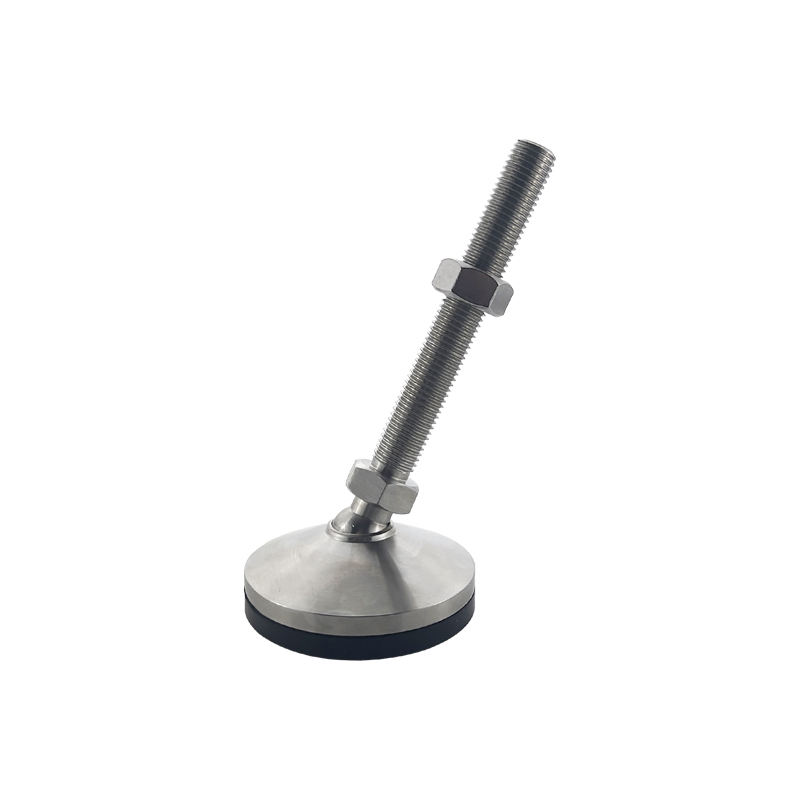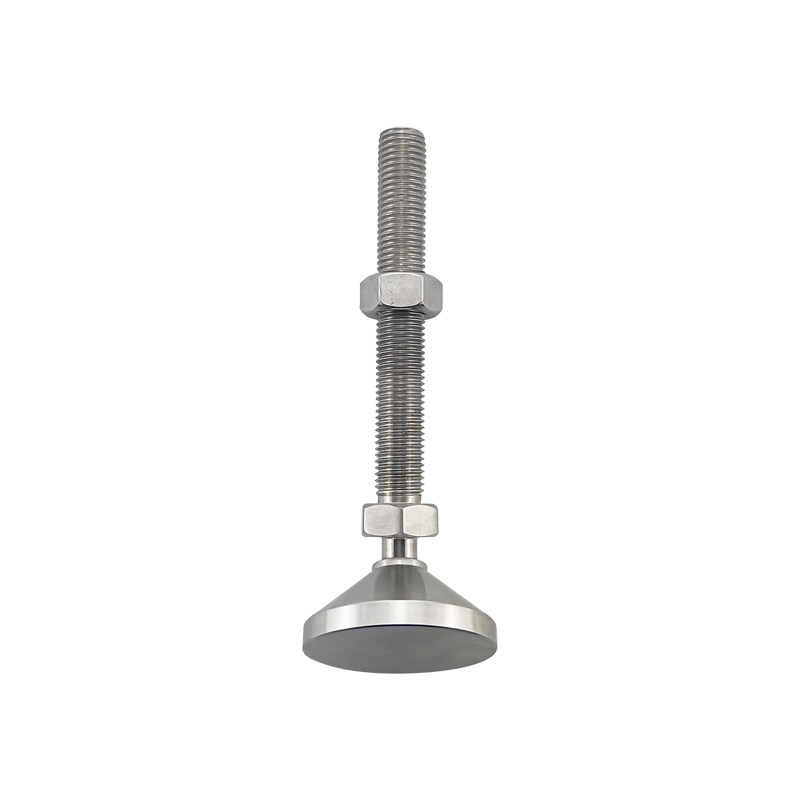Equipment leveling feet are essential components that provide stability and height adjustment for various types of industrial machinery, heavy-duty equipment, and sensitive devices. Accurate measurement of these adjustable machine feet ensures a secure fit, optimal load distribution, and safe operation, especially in environments where precision and durability are critical.
Whether you are replacing damaged industrial leveling mounts or installing new equipment, this step-by-step guide will show you how to measure equipment leveling feet correctly. It also provides tips to help you select the best leveling solution for your specific application.
Why Accurate Measurement of Equipment Leveling Feet Matters?
Choosing the correct leveling foot is more than just matching thread size—it’s about ensuring long-term performance and safety.
Benefits of Proper Measurement:
Ensures Stability: Prevents wobbling and vibration in sensitive machinery.
Improves Safety: Supports heavy loads and prevents tipping.
Reduces Downtime: Helps avoid costly equipment damage or maintenance.
Enhances Precision: Especially important for lab equipment, CNC machines, and metrology tools.
Tools You’ll Need
Before starting, gather the following tools to ensure precise measurement:
● Digital caliper (for accurate diameter and length readings)
● Thread pitch gauge (metric and imperial)
● Ruler or measuring tape
● Pen and paper or a mobile device to record values
● A sample of your existing leveling foot (if replacing)
How to Measure Equipment Leveling Feet - Step-by-Step
1. Identify the Thread Size
The thread size is one of the most important dimensions, especially for threaded leveling feet designed for industrial applications.
a. Measure Thread Diameter
Use a digital caliper to measure the outer diameter of the threaded stud.
Common metric sizes: M8, M10, M12, M16, M20
Imperial examples: 3/8"-16, 1/2"-13, 5/8"-11
b. Determine Thread Pitch
Thread pitch is the distance between threads.
For metric threads: Measured in millimeters (e.g., M12 × 1.75)
For imperial threads: Measured in threads per inch (TPI)
Use a thread pitch gauge for precision, especially if you're working with machine feet that require high tolerance.
2. Measure Stud Length
Stud length refers to the threaded portion that screws into the equipment’s base.
Measure from the end of the thread to the point where it meets the foot’s base.
Industrial applications often require longer studs for secure anchoring and load distribution.
3. Check Base Diameter
The base of the equipment leveling foot supports the weight and maintains balance. A wider base often means better stability and load distribution.
Use a caliper or ruler to measure the diameter of the foot pad.
Common sizes: 40mm, 60mm, 80mm, 100mm
Tip: For heavy-duty machinery, opt for a wide-base leveling foot with non-slip pads.
4. Measure Total Height
The total height of a leveling foot includes both the threaded stud and the base.
This is especially important in machine setups where leveling height is critical.
Adjustable leveling feet often come with a built-in swivel or pivot to accommodate uneven floors.
5. Determine Foot Type and Material
Leveling feet vary by mounting style and material, which can affect both performance and lifespan in industrial environments.
a. Mounting Style
Male-threaded leveling feet: Most common for industrial machines.
Female-threaded feet: Accept bolts and are used in specific baseplate setups.
b. Base Material
Stainless steel leveling feet: Ideal for corrosive or hygienic environments (e.g., food production).
Rubber or anti-vibration pads: Minimize shock and reduce machine noise.
Nylon base: Lightweight and protects delicate floor surfaces.
6. Load Capacity Considerations
When selecting new equipment leveling feet, you must match the load rating to your equipment’s total weight.
Light-duty feet: Support up to 100 kg
Medium-duty feet: Support up to 500 kg
Heavy-duty machine leveling feet: Often support 1000 kg or more
Check the manufacturer's specifications to ensure you're not overloading the foot.
7. Environmental and Floor Conditions
Where and how your equipment is used matters:
For damp or corrosive environments, use stainless steel leveling mounts.
For high-vibration zones, select anti-vibration leveling feet.
For soft or delicate flooring, rubber-based feet offer better floor protection.
Pro Tips for Replacing Equipment Leveling Feet
Take an old leveling foot with you when shopping, or compare it with online technical drawings.
Double-check thread compatibility (especially for imported equipment).
Choose adjustable leveling feet that allow fine-tuning for uneven shop floors.
Look for swivel leveling feet for machines installed on slightly sloped or irregular flooring.
Use Cases for Equipment Leveling Feet
Understanding your application helps refine your choice:
CNC Machines – Need vibration resistance and precision adjustment.
Conveyor Systems – Require wide, stable leveling mounts.
HVAC Equipment – Use corrosion-resistant feet for roof or outdoor use.
Workstations and Benches – Medium-duty feet with height adjustability.
Laboratory Equipment – Anti-vibration stainless steel feet for precision.
Common Mistakes to Avoid
Ignoring load capacity can lead to structural failure.
Assuming all threads are the same, always verify thread type and pitch.
Using the wrong material for the environment (e.g., zinc-plated in corrosive areas).
Forgetting to measure the height, which affects machine leveling and performance.
Partner with a Professional Equipment Leveling Feet Manufacturer
Manywell's equipment anti-vibration/leveling feet are designed to ensure steadfast support and impeccable balance across various industrial and commercial settings. Our industrial vibration isolation products—such as medical device vibration dampening, high-tech machinery vibration reduction, pharmaceutical production vibration reduction, and chemical plant anti-vibration solutions—are highly sought after in applications requiring the highest standards of stability and performance.
Medical Industrial Automation Equipment Leveling Feet
Applications of Manywell Equipment Leveling Feet
Manywell equipment leveling feet are used in a wide range of industrial applications, including CNC machines, medical equipment like MRI and X-ray systems, semiconductor fabrication tools such as wafer etching and photolithography machines, and 3D printers. They are also ideal for stabilizing industrial pumps and compressors, HVAC units, conveyor systems, power generators, electrical cabinets, and industrial workstations, ensuring vibration-free operation, improved accuracy, and enhanced equipment longevity across various industries.
Why Choose Manywell Equipment Leveling Feet?
Durability and Reliability: Engineered for long-lasting support under high-load conditions.
Precision Vibration Control: Enhance safety and equipment performance by minimizing unwanted vibrations.
Versatile Applications: Widely used in industries ranging from medical and automation to new energy and transportation.
Customization Options: Tailor-made solutions are available to meet specific needs in specialized environments.
Custom Solutions for Specialized Needs
If your industry has unique requirements, Manywell offers customer-specific special solutions to meet your exact needs. Whether it’s for a bespoke leveling foot design or specific material requirements, our engineering team can provide customized solutions that fit your precise application.
Conclusion
Measuring equipment leveling feet may seem simple, but accuracy is critical for industrial and commercial applications. From determining thread size and base diameter to considering load capacity and environmental factors, every detail plays a role in equipment stability and performance.
Whether you’re replacing existing industrial machine feet or selecting mounts for new machinery, use this guide to ensure a perfect fit and long-lasting results.
Elevate your equipment’s stability and performance with Manywell Equipment Leveling Feet—your trusted partner for industrial support solutions. Click to explore our equipment leveling feet range and learn more.

